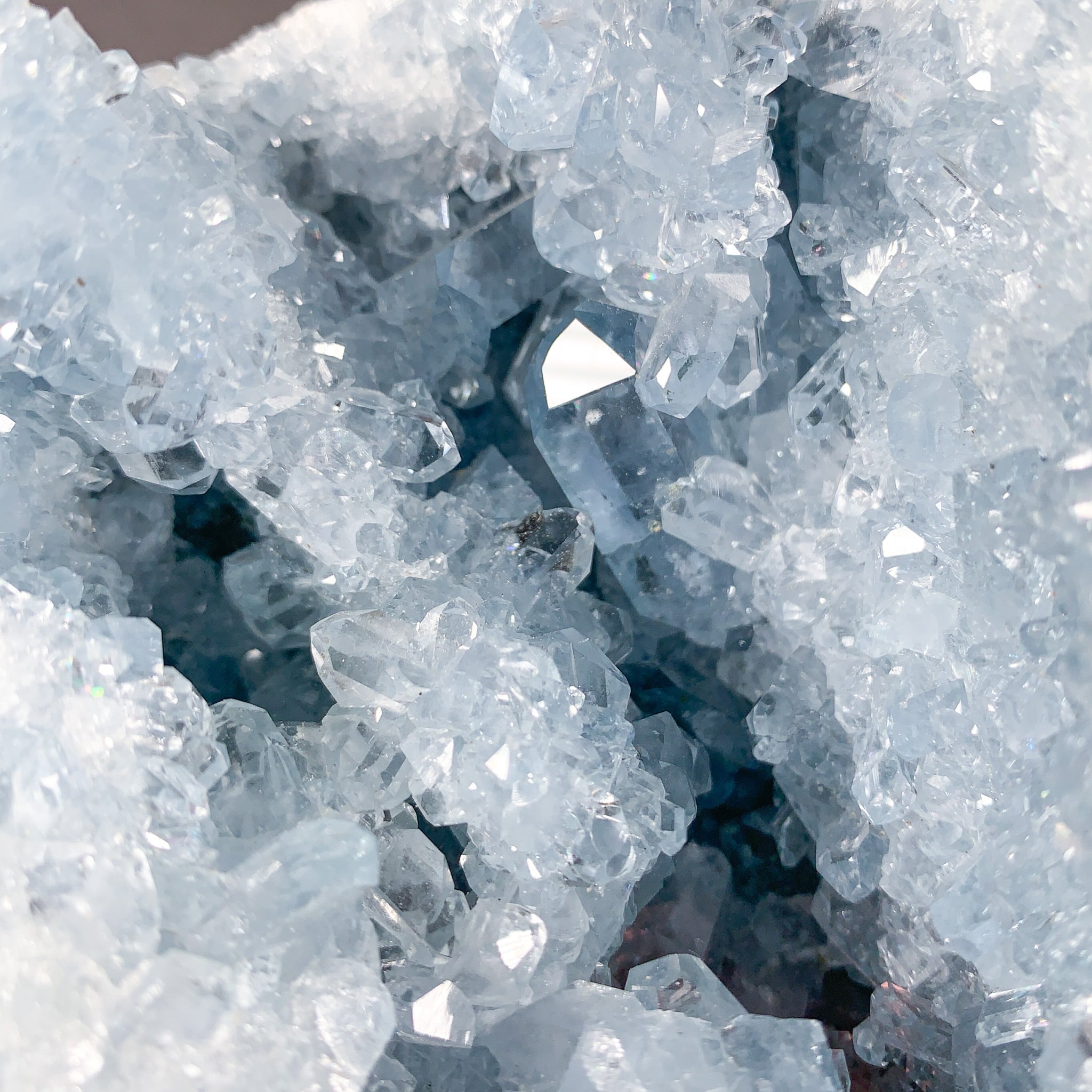An incredible trilobite fossil from the Hamar Laghdad Formation, Western Sahara, Morocco. This variety of trilobite called Cornuproetus sp. lived during the Devonian period approximately 400 million years ago. Even the earliest trilobites had complex, compound eyes with lenses made of calcite. This specimen shows excellent detail in both the eyes and unique body structure, with gorgeous contrast with the host rock.
Trilobites first appeared in the fossil record in the early Cambrian period approximately 520 million years ago. Most trilobites went extinct at the end of the Devonian period during a massive extinction event, which may have been related to low oxygen in the oceans which killed off many other forms of sea life including coral reef builders, most trilobites and brachiopods. Trilobites went fully extinct sometime in the Permian period approx. 250 million years ago. With a nearly 300 million year geologic run, the diversity and variation in species will certainly keep any collector busy!
Fossil trilobites from this location are often found as concretions. Concretions are rounded rocks that form around a centralized object, typically organic matter or a bone or shell, which creates a nucleus for mineral-rich fluid to precipitate around. This creates layers of harder, more weather-resistant mineralization. In this case, the Trilobite acted as the nucleus, with clay and mud forming around it.
When fossil-hunters find the Trilobites, they are often fully encased in these stone concretions. They "crack" these rounded concretions open to see if there are fossils hiding inside (similar to cracking open a geode to see if crystals are inside). Because of this, you will often see a fracture line from the original strike, which sometimes penetrates through the fossil itself.
The best trilobite specimens are then "prepared" by using fine tools, air abrasion, and other methods to remove as much of the host rock material as possible to display the fine details of the fossil hiding underneath. This piece has been expertly cleaned by a fossil preparator with over 30 years of experience.
Approx. 4" L x 3.5" W x 1.5" H
Need a display stand?
If you would like a stand to display this specimen vertically or horizontally with a slight tilt forward, we recommend Stand A3
Fossil Care
Want to know more about caring for your fossils? Learn more here




























